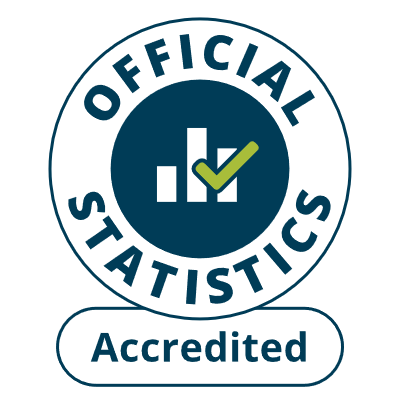
 Active Business Enterprises per 10,000 population by area and year
Active Business Enterprises per 10,000 population by area and year
None
|
||||||||||||||||||||||||||||||||||||||||||||||||||||||||||||||||||||||||||||||||||||||||||||||||||||||||||||||||||||||||||||||||||||||||||||||||||||||||||||||||||||||||||||||||||||||||||||||||||||||||||||||||||||||||||||||||||||||||||||||||||||||||||||||||||||||||||||||||||||||||||||||||||||||||||||||||||||||||||||||||||||||||||||||||||||||||||||||||||||||||||||||||||||||||||||||||||||||||||||||||||||||||||||||||||||||||||||||||||||||||||||||||||||||||||||||||||||||||||||||||||||||||||||||||||||||||||||||||||||||||||||||||||||||||||||||||||||||||||||||||||||||||||||||||||||||||||||||||||||||||||||||||||||||||||||||||||||||||||||||||||||||
Metadata
- Summary information
- High level information
- Statistical quality information
- Keywords
- Weblinks
- Open Data
General description
This dataset details business births, deaths and active enterprises by area.Data collection and calculation
Births, deaths and active enterprises per 10,000 of the population are calculated using ONS' population estimates, which are currently available up to 2023.ONS use data from the IDBR to produce business demography statistics, using guidelines found in the Eurostat/OECD manual on Business Demography. The starting point for demography is the concept of a population of active businesses in a reference year. These are defined as businesses that had either turnover or employment at any time during the reference period. Births and deaths are then identified by comparing active populations for different years.
A birth is defined as a business that was present in year t, but did not exist in year t-1 or t-2. Births are identified by making a comparison of annual active population files and identifying those present in the latest one, but not the two previous ones.
A death is defined as a business that was on the active file in year t but no longer present on the active file for year t+1 or t+2. To produce more timely statistics, the UK business demography statistics contain a preliminary death indicator, which includes an adjustment for estimated reactivations. Reactivations occur where a business becomes dormant for a period of less than 2 years, then recommences activity in a manner which complies with a definition of continuity. If the definition of continuity is not met (e.g. if a business recommences activity but at a different location and with a different activity), this would be considered a death followed by a birth. Reactivations can also occur due to lags in the administrative data source (VAT/PAYE) so that a business that continues to trade can appear to die. The deaths data exclude losses to the population as a result of mergers, break-ups, split-offs or other re-structuring.
The ONS business demography statistics differ from the former Department for Business Enterprise and Regulatory Reform (BERR) statistics statistics in that they include PAYE-registered units. Therefore, the ONS statistics will additionally include the births and deaths of employing businesses which are not VAT-registered, providing a more comprehensive view of business start-up activity. The ONS data also has a higher number of active businesses than both the former BERR VAT-based series and the expanded UK Business: Activity Size and Location publication. This is because the business demography methodology takes into account businesses that were active at any time during the reference year, whereas the former BERR series calculates stock by adding registrations and subtracting deregistrations from the previous year’s stock; the UK Business: Activity Size and Location publication is based on a snapshot taken from the IDBR at a point in time in March. Additionally, business demography includes a group of non-corporate PAYE businesses, which are excluded from the UK Business: Activity Size and Location due to a small risk of duplication.
The economic regions, as set out in Welsh Government’s Economic Action Plan, are made up of the following local authorities:
Mid and South West Wales: Pembrokeshire, Carmarthenshire, Swansea, Neath Port Talbot, Powys and Ceredigion.
South East Wales: Bridgend, The Vale of Glamorgan, Cardiff, Rhondda Cynon Taff, Merthyr Tydfil, Caerphilly, Blaenau Gwent, Torfaen, Monmouthshire and Newport.
North Wales: Isle of Anglesey, Gwynedd, Conwy, Denbighshire, Flintshire and Wrexham.
The region of Mid & South West Wales was formerly split into the following two economic regions:
Mid Wales: Powys and Ceredigion.
South West Wales: Pembrokeshire, Carmarthenshire, Swansea and Neath Port Talbot.
Within this previous split of the Welsh economic regions, part of Gwynedd local authority (the former district of Meirionydd) lay in the Mid Wales economic region, although this is not represented in the data.
Please note, levels for Welsh economic regions and NUTS3 areas and all rates (including per 10,000 population figures) have been calculated using the rounded figures, published by the Office for National Statistics.
Frequency of publication
AnnualData reference periods
2002 to 2023Rounding applied
Data are rounded to nearest 5.Revisions information
The latest two years' estimates on births and deaths are subject to revision, which would normally be made in the following year's publication.Title
Business births, deaths and active enterprisesLast update
22 November 2024Next update
January 2025Publishing organisation
Welsh GovernmentSource 1
Business Demography, Office for National StatisticsContact email
economic.stats@gov.walesDesignation
National StatisticsLowest level of geographical disaggregation
Local authoritiesGeographical coverage
UK regionsLanguages covered
English and WelshData licensing
You may use and re-use this data free of charge in any format or medium, under the terms of the Open Government License - see http://www.nationalarchives.gov.uk/doc/open-government-licenceStatistical quality
See WeblinksTotals across tables may differ by minor amounts due to the disclosure control methods used.







 2013
2013